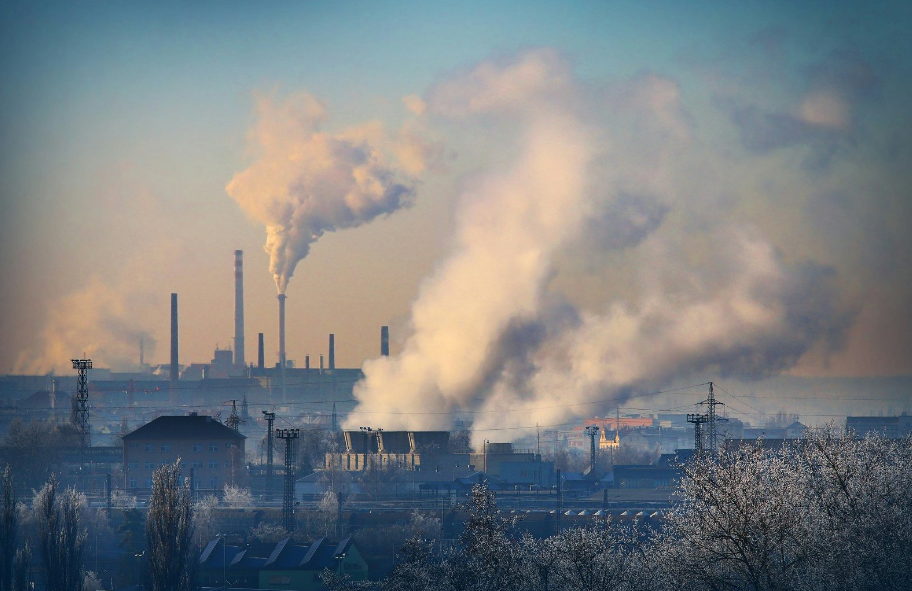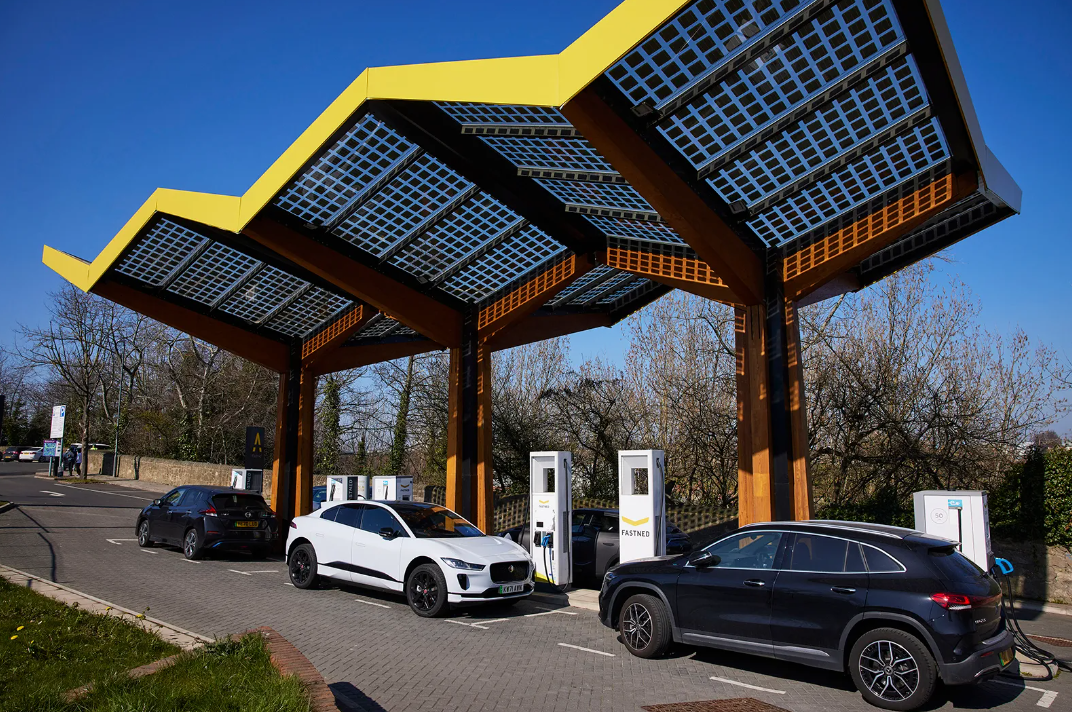· 11 min read
This article is part one of a three-part series. You can find part two here.
India’s growing population and fast-paced economy are skyrocketing demands for energy, enabling infrastructure, and new manufacturing capacity. Today, India is the world’s third-largest carbon dioxide emitter after China and the United States. Continued reliance on fossil fuels would exacerbate existing socioeconomic imbalances, as worsening pollution and rising carbon emissions would severely impact the Indian populace through extreme events and pollution-related diseases, particularly among the most vulnerable; these events would also have significant adverse economic impacts.
Considering these circumstances, a critical question emerges: how can India balance sustaining growth and achieving prosperity for all while accelerating the transition to a low-carbon economy?
Policy stage and the green energy challenge
India’s twenty-nine states and seven union territories vary significantly in population, urbanization, economics, natural resources, and regulatory environments. A complex federal political system has given rise to distinct sub-national economies with unique growth drivers, investment climates, and reform strategies. As the Central Government’s policy instruments – aimed at coordinating and driving the country’s overall energy strategy – may collide with policies enacted by the autonomous State Governments, the risk of overlapping and increased competition should not be underestimated and could potentially hinder an efficient and effective transition to a low-carbon economy.
India’s current goals (i.e., to become a $5 trillion economy by 2028, to achieve climate neutrality by 2070, and to become a global clean-tech manufacturing hub) are undeniably ambitious. Substantial capital investments will be required to deploy the needed clean technologies over a relatively short timeframe.5 So far, India has advanced decarbonization opportunities by proactively subsidizing solar and wind.6 Still, it remains to be seen whether New Delhi possesses the fiscal might needed to achieve the desired transition at scale.7
The International Monetary Fund (IMF) estimates that India’s GDP grew by 6.3 percent in 2023 - the highest among the G20 countries.8 According to estimates from the Organisation for Economic Co-operation and Development (OECD), India will continue to lead the race in 2024, with a projected GDP growth of 6.2 percent.9 Against this thriving backdrop, however, many hurdles remain. The most pressing is the extensive infrastructure gap, which thwarts competitiveness and slows economic growth. Despite increasing infrastructure-related capital spending – mainly through the $1.8 trillion National Infrastructure Pipeline 2019-2025 Act10 and the $549.5 billion 2023-2024 Union Budget11 – infrastructure investments would need to be significantly higher for the foreseeable future, especially in the energy sector, to meet projected needs.12
Although facing increasing international competition, India strives to establish itself as a global leader in clean energy technologies, with an emphasis on green hydrogen.13 New Delhi aims to become a global leader in hydrogen production, aiming to supply 10 percent of global demand.14 Still, our research shows that land and water availability and infrastructure challenges could limit the country’s ability to become a green hydrogen export champion.15 To succeed, India must produce hydrogen in less densely populated areas and efficiently transport it to demand or export centers. However, less densely populated areas face higher infrastructure gaps, further challenging deployment.16
To address these challenges, in early 2023, New Delhi launched the National Green Hydrogen Mission, which earmarked $2.3 billion to incentivize commercial green hydrogen production, make India a net exporter, and reach net-zero emissions by 2070.17 Key strategic pillars include industrial competitiveness, energy security, energy affordability, clean transport, and climate targets. The strategy also aims to produce 5 million tons of green hydrogen by 2030,18 deploy between 60 and 100 GW of electrolyzer capacity, avert more than 50 million tons of carbon dioxide emissions annually, and create more than 600,000 new jobs. India’s hydrogen demand is expected to increase to 25 million tons by 2050,19 driven primarily by the industrial and transportation sectors, which account for about 52 percent of this growth.20 To rationalize investment efforts, the Central Government has identified 10 States where green hydrogen or ammonia clusters should be created.21
India’s hydrogen strategy is part of a broader goal to achieve energy independence by 2047 – a true challenge considering that India currently imports over 40 percent of its primary energy demand at a cost of $90 billion annually. Today, India is the world’s third-largest energy consumer, with fossil fuels accounting for more than 95 percent of primary energy supply (58.3 percent from coal, 29.7 percent from oil, and 7.7 percent from natural gas).22
With an installed capacity of 132 GW,23 renewables comprise about 1.8 percent of India’s energy mix (3.6 percent, including hydropower) and over 40 percent in the power sector.24 Although installed capacity has grown at an average pace of 17.3 percent annually over the past few years,25 it is estimated that India will require more than $500 billion in new investments to achieve its renewable targets by 2030, namely 500 GW of installed renewable energy (280 GW of solar and 140 GW of wind power).26 This is a tall order considering that investments have averaged only $13-14 billion annually; inefficient authorization and land expropriation procedures further complicate matters.27 Moreover, India’s renewable installed capacity would need to reach about 1,000 GW by 2040 to reach its net-zero goals.28 Furthermore, to produce 5 million tons of green hydrogen a year, India would require between 100 and 125 GW of additional new renewables,29 doubling today’s installed capacity.30Therefore, the Central Government must be able to streamline decision-making across states and incentivize new infrastructure deployment by de-risking investments in order to achieve its goals.
But is New Delhi allocating enough financial resources to drive the desired transition at scale? A comparison with other decarbonization plans (such as the EU Fit for 55,31 Net Zero Industry Act,32 or RePowerEU33 and the U.S. Inflation Reduction Act [IRA]34) refutes this question, both in terms of infrastructure deployment and renewables capacity growth. Launched in August 2022, the IRA earmarked $370 billion over ten years to accelerate the transition to a low-carbon economy and stimulate industrial competitiveness in clean-technology sectors. The United States aims to reduce its dependency on Chinese clean-technology supply chains through subsidies, local content requirements, and diversification; India could play a pivotal role in this objective. Although India’s hydrogen push lags, New Delhi can leverage some key competitive advantages, including one of the world’s lowest renewable energy prices and a large, fast-growing domestic market; however, time is of the essence because the country faces competition from other Asian energy giants, such as China.35 Financing from both the private sector and multinational banks will be crucial to bridging this investment gap. For example, in June 2023, the World Bank approved a $1.5 billion financing package for New Delhi to accelerate the development and deployment of low-carbon technologies focusing on renewable energy capacity growth, supporting green hydrogen adoption, and stimulating private investments.36
Water availability presents additional challenges in scaling green hydrogen. India is already one of the world’s most water-stressed countries; furthermore, overall water demand is expected to exceed supply two-fold by 2030.37 Producing one kilogram of green hydrogen via electrolysis requires about nine liters of fresh water; therefore, India would need about 45 million cubic meters a year to meet its green hydrogen targets alone. Addressing water scarcity concerns will, again, require supporting technology innovation and extensive investments in new infrastructure funded by public and private capital. Today, the direct use of seawater in electrolysis is hindered by its high salinity (as salts lead to corrosion).
However, researchers worldwide are developing processes that could make direct seawater electrolysis viable.38 Additional innovations will also be necessary to boost electrolyzers’ efficiency and lifespan while reducing their power and water requirements.39
Furthermore, India must also incentivize the creation of fully-fledged green hydrogen industrial value chains and scale up domestic electrolyzer manufacturing capacity.40 These actions will avoid inefficiencies and mistakes of the past when dependence on foreign manufacturing (i.e., Chinese solar technologies) undermined the country’s ability to deploy robust industrial clean technology value chains at scale. To accelerate hydrogen value chains’ development and deployment, the Government must design appropriate incentives to drive green hydrogen adoption while supporting workforce skill development.41
According to the New Delhi Council for Energy, Environment and Water, green hydrogen costs fell from $4 to $3 per kilogram last year; the Government aims to reduce these prices to about $1 over the coming years, at which point green hydrogen would become competitive with coal.42 To incentivize this process, the Indian government has earmarked $2.1 billion through a three-year incentive scheme to reduce electrolytic hydrogen production costs by 10 percent. Moreover, India’s hydrogen policy allows new producers to purchase renewable energy from the grid with no transmission costs for 25 years.43
Conclusion
To validate its geopolitical and economic leadership aspirations, India must navigate the delicate balance of sustaining economic growth while achieving prosperity for all. The case of hydrogen highlights how adopting new clean technologies can offer unique opportunities to accelerate the transition to a low-carbon economy. Still, deployment at scale faces significant challenges that neither the private nor the public sectors can address alone.
This article is part of a full report. illuminem Voices is a democratic space presenting the thoughts and opinions of leading Sustainability & Energy writers, their opinions do not necessarily represent those of illuminem.
References
7 See Economist Intelligence Unit (2023), India’s Manufacturing Moment, EIU Report. 8 IMF (2023), World Economic Outlook.
9 OECD (2024), OECD Economic Outlook, Interim Report.
10 Government of India (2023), National Infrastructure Pipeline.
11 Government of India, Ministry of Finance (2023), Union Budget 2023-2024.
12 In the Union Budget 2023-24, India’s capital expenditure is expected to increase by 33% to $122.3 billion. Infrastructure spending will increase by 32.4%, with $4.3 billion of investment devoted to energy transition and green hydrogen. See Batra S., Ohri N., Acharya S. (2023), India hikes spending, shuns “outright populism” in last pre-election budget, Reuters. See also Government of India, Ministry of New and Renewable Energy (2023), Promotion of Clean Energy – Major steps taken by the Government to accelerate the Indian economy’s transition to one powered by green energy, Press Release.
13 Green or renewable hydrogen refers to hydrogen produced using renewable energy through water splitting.
14 Singh S. C. (2023), India’s green hydrogen push and challenges, Reuters.
15 Eicke, L., and De Blasio, N. (2022) “Green hydrogen value chains in the industrial sector— Geopolitical and market implications,” Energy Research & Social Science 93, 102847 https://doi. org/10.1016/j.erss.2022.102847
16 Pflugmann, F., and De Blasio, N. (2020) “The Geopolitics of Renewable Hydrogen in Low Carbon Energy Markets,” Geopolitics, History, and International Relations 12(1): 9–44. https//doi. org/10.22381/GHIR12120201
17 Government of India, Ministry of New and Renewable Energy (2023), National Green Hydrogen Mission.
18 Today’s global hydrogen production stands at 75 million tons, with almost 99 percent produced from fossil fuels.
19 Kamalakara Rao V. (2023), India needs 25 million metric tons of hydrogen energy by 2050, says Union Petroleum Ministry Secretary, The Hindu
20 Bakshi A. (2023), The Green Hydrogen Economy: Insights from India, European University Institute.
21 Biogradlija A. (2022), Government puts 10 states on the list for green hydrogen production, H2 Energy News. The 10 States listed as priority are: Karnataka, Odisha, Gujarat, Rajasthan, Maharashtra, Tamil Nadu, Andhra Pradesh, Kerala, Madhya Pradesh, and West Bengal.
22 IEA (2023), India Country Profile.
23 Government of India, Ministry of New and Renewable Energy (2023), Installed Renewable Capacity. 24 See EIA (2023), India. See also NITI Aayog (2023), India Climate & Energy Dashboard.
25 Lalwani A. (2023), Green Hydrogen: An Opportunity for India-Africa Cooperation, ORF, Occasional Paper Issue No. 388.
26 Hussain Z. (2023), India gets closer to meeting 2030 renewable energy targets with new transmission plan, The Times of India.
27 Gagal V. (2022), Land acquisition continues to be a roadblock for renewable energy projects, The Hindu Businessline. See also Powell L., Sati A., Tomar V.K., Solar Energy in India: Contestation of Land Rights, ORF.
28 Ahluvalia S. (2023), On the freeway to net zero, ORF.
29 Green hydrogen production is capital-intensive and requires a large amount of renewable power. Producing a million ton of green hydrogen a year requires on average 10 gigawatts of electrolyzers, 20 gigawatts of renewable power generation, and $30 billion in investment.
30 See IEA (2023), National Green Hydrogen Mission.
31 Council of the European Union (2023), Fit for 55.
32 European Commission (2023), The Net-Zero Industry Act: Accelerating the transition to climate neutrality.
33 European Commission (2023), REPowerEU. Affordable, secure and sustainable energy for Europe. 34 The White House (2022), By the Numbers: The Inflation Reduction Act, Press Release. 35 Parkin B. (2023), India’s Big Hopes for Green Hydrogen, The Financial Times
36 World Bank (2023), World Bank Approves $1.5 Billion in Financing to Support India’s Low-Carbon Transition.
37 IRENA (2019), Water Use in India’s Power Generation: Impact of Renewables and Improved Cooling Technologies to 2030.
38 Kuang et al. (2019) ‘Solar-driven, highly sustained splitting of seawater into hydrogen and oxygen fuels.’ PNAS. 116 (14). p 6624-6629.
39 KPMG (2023), India’s National Hydrogen Mission. India on a Mission Possible?
40 See Lalwani A. (2023), India’s leadership in green hydrogen will be decided by its leadership in the electrolyser, ORF
41 Koshy J. (2023), India’s Plan to Develop Green Hydrogen, The Hindu
42 Pasricha A. (2023), India Makes $2.3 Billion Green Hydrogen Push to Meet Climate Goals, VOA News
43 Sharma P, Roshna N., Vora M., Kanwar H., Chance of a lifetime: Can India Show the Developing World a Unique Path to Net Zero?, Wood Mackenzie, January 2024.






